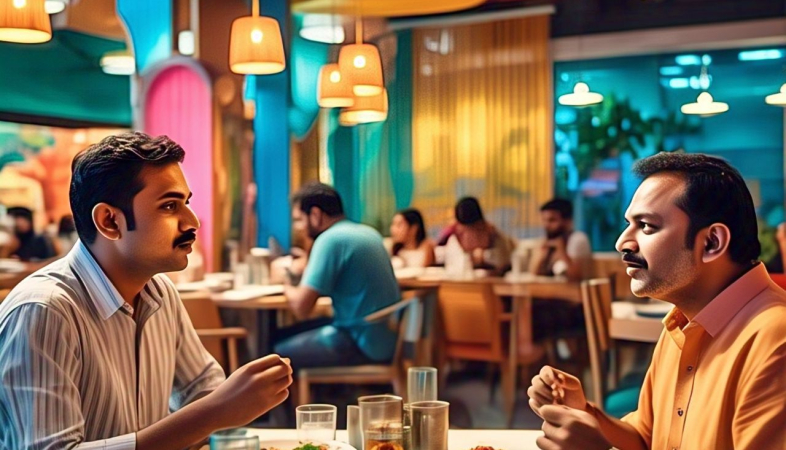Why Restaurants Are Focusing on Experience-Based Dining
The shift toward experience-based dining is a direct response to the changing landscape of the restaurant and hospitality industry.
In recent years, the restaurant industry has undergone a
significant transformation. Dining out is no longer just about the food – it’s
about the overall experience. As competition grows and consumer expectations
evolve, restaurants are increasingly focusing on creating immersive,
experience-based dining that goes beyond the traditional meal. This shift
represents a move towards a more holistic approach to hospitality, one where
the atmosphere, service, and entertainment all play an integral role in shaping
the dining experience.
Experience-based dining taps into the growing desire for more than just a meal; it offers something that is memorable and impactful. This trend reflects the changing preferences of modern consumers, who are no longer satisfied with simply sitting down to eat. Guests now seek an experience that engages all of their senses and leaves a lasting impression. This may include elements such as thematic décor, interactive cooking, live music, or unique tasting menus that challenge traditional notions of dining. For example, restaurants that integrate food with storytelling, or those that offer a multisensory experience, where lighting, music, and even scents complement the dishes, are gaining in popularity.
One of the key reasons restaurants are focusing on experience-based dining is the shift in consumer behavior. Today’s diners are increasingly driven by social media, where the visuals and narrative around a dining experience are just as important as the meal itself. Instagrammable moments – beautifully plated dishes, creative cocktails, and unique restaurant interiors – are all part of the dining package that can entice new guests. Consumers want to share their experiences with their networks, and restaurants have recognized that creating photo-worthy experiences can lead to organic marketing and increased exposure.
Another driving factor is the rise of experiential dining as a form of entertainment. Restaurants are increasingly competing with other forms of leisure, such as concerts, theaters, and other entertainment venues. Dining out has become an activity, not just a necessity. As a result, many restaurants are incorporating elements of entertainment into their offerings. This could be as simple as hosting themed nights, wine tastings, or cooking classes, or as complex as offering interactive experiences such as dinner theater or chef’s tables where guests can watch their meal being prepared in real-time. These experiences not only make dining more engaging but also allow customers to feel more connected to the food and the chefs, enhancing the overall experience.
The focus on experience-based dining is also part of the industry’s efforts to differentiate themselves in a crowded market. With so many dining options available, restaurants need to find innovative ways to stand out. Offering something unique – whether it’s a one-of-a-kind dish, an immersive atmosphere, or an engaging dining format – can help attract customers who are looking for a different type of outing. As dining experiences continue to evolve, offering more than just food becomes a key differentiator. This differentiation can also be seen in the rise of pop-up restaurants, collaborations with famous chefs, or limited-time immersive dining experiences, all of which create a sense of exclusivity and excitement around the dining experience.
In addition to standing out, restaurants also aim to create a sense of community. Many experience-based dining establishments go beyond the meal by fostering a sense of connection between guests, staff, and the overall atmosphere. Family-style meals, interactive elements where guests can participate in cooking or ingredient selection, and events that bring together like-minded individuals help build a sense of belonging. These experiences often transcend the transactional nature of dining out, creating emotional connections with guests that can lead to repeat visits and increased customer loyalty.
Sustainability and local sourcing are also becoming important components of experience-based dining. Consumers are more conscious than ever of where their food comes from and how it impacts the environment. As a result, many restaurants are focusing on using locally sourced ingredients, sustainable practices, and even offering farm-to-table experiences. This not only appeals to the growing eco-conscious customer base but also adds to the authenticity of the dining experience. When guests feel like they are supporting local farmers, sustainable businesses, and responsible sourcing practices, the experience becomes more meaningful.
For restaurants, creating an experience goes hand-in-hand with personalized service. Customers now expect more attention to detail and a tailored experience. Whether it’s remembering a guest’s preferred drink, offering recommendations based on their past visits, or curating a meal based on dietary preferences, personalization enhances the overall experience. Many restaurants are using technology, such as customer relationship management (CRM) tools, to gather data on their guests and provide customized experiences. This personalized approach makes guests feel valued and special, which is key to building long-term loyalty.
The shift toward experience-based dining is a direct response to the changing landscape of the restaurant and hospitality industry. By focusing on creating memorable experiences, restaurants are not only providing a meal but offering something much deeper and more lasting. This approach allows restaurants to differentiate themselves in a competitive market, build stronger connections with their customers, and stay relevant in a world where dining is no longer just about food – it’s about the entire journey from the moment a guest walks in to the moment they leave.
.png)




























